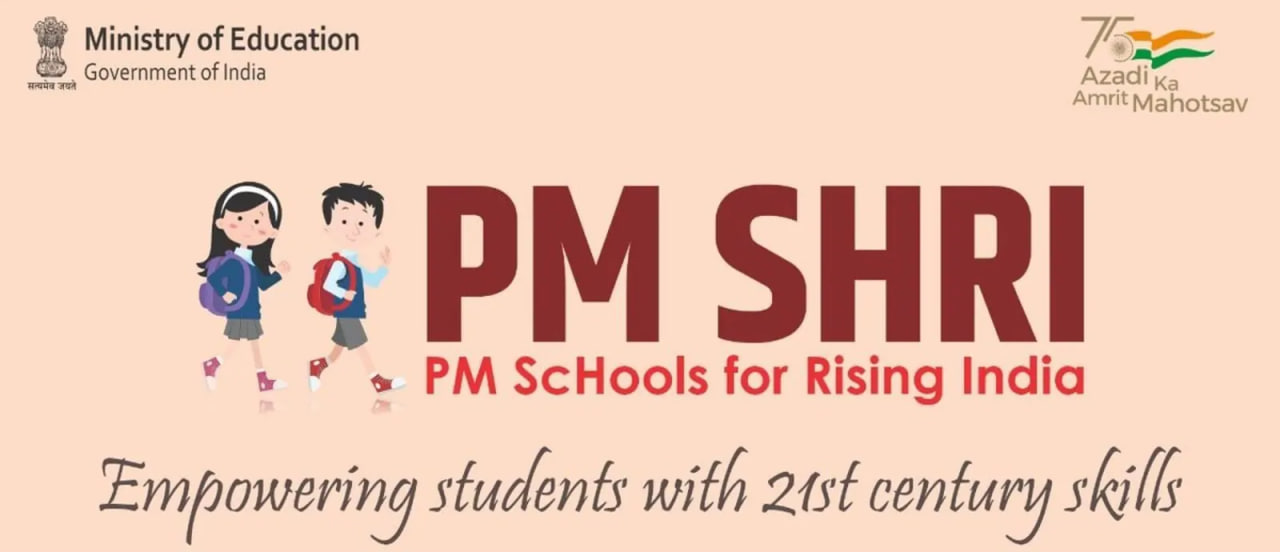Description

Copyright infringement not intended
Picture Courtesy: www.hindustantimes.com
Context: The Union Education Minister launched the Pradhan Mantri Schools for Rising India (PM SHRI) scheme in Odisha, with the aim of developing thousands of schools across the country.
Pradhan Mantri Schools for Rising India (PM SHRI) scheme in Odisha
- In the first phase, the PM SHRI scheme will be implemented in 63 institutes out of 97 Central Schools and Jawahar Navodaya Vidyalayas run by the Centre in Odisha.
- For the fiscal year 2023-24, the Centre has sanctioned Rs 50.8 crore for Odisha's schools run by the Centre. Of this amount, Rs 12.7 crore has already been released in the first instalment.
- The union minister mentioned that the PM SHRI scheme will be implemented in the state with a total budget of more than Rs 120 crore.
- The Odisha government is yet to sign Memorandums of Understanding (MoUs) with the Department of School Education and Literacy of the Ministry of Education for the implementation of the PM SHRI scheme.
Pradhan Mantri Schools for Rising India (PM SHRI) scheme
- The PM SHRI scheme is a centrally sponsored scheme launched by the Ministry of Education in September 2022.
- The scheme aims to develop 14,500 schools across the country into exemplary schools, showcasing the implementation of the National Education Policy 2020 (NEP 2020). These schools will offer leadership to other schools in the neighbourhood and provide high-quality education in an equitable, inclusive, and joyful school environment.

Key features of the PM SHRI scheme
- Holistic and Multidisciplinary Education: The schools will provide holistic and multidisciplinary education, focusing on developing students' cognitive, affective, and social skills.
- Experiential Learning: The schools will emphasize experiential learning, using hands-on activities and projects to make learning more engaging and meaningful.
- Technology Integration: The schools will integrate technology into the learning process to enhance teaching and learning effectiveness.
- Inclusive and Equitable Education: The schools will provide inclusive and equitable education, ensuring that all students have access to quality education regardless of their background or ability.
- Teacher Development: The schools will focus on teacher development, providing teachers with the training and resources they need to implement NEP 2020 effectively.
Selection of PM SHRI schools
- The PM SHRI schools are selected from existing schools managed by the Central Government, State/UT Governments, local bodies, or private institutions.
- The schools will be selected based on their academic performance, infrastructure, and potential for transformation.
Implementation of the PM SHRI scheme
- The PM SHRI scheme is implemented through the existing administrative structure available for Samagra Shiksha, KVS, and NVS. The other autonomous bodies would be involved on a specific project basis as required.
Expected outcomes of the PM SHRI scheme
- Improved learning outcomes for all students.
- Increased access to quality education for all children.
- Enhanced teacher effectiveness.
- Strengthened school leadership.
- Development of exemplary schools that showcase the implementation of NEP 2020.

Conclusion
- The PM SHRI scheme is a visionary step by the government of India to transform the education sector and prepare the young generation for the challenges and opportunities of the 21st century. The scheme reflects the commitment of the government to provide every child with the right to education and to make India a global leader in education, innovation and human capital.
Must Read Articles:
PM-SHRI SCHEME: https://www.iasgyan.in/daily-current-affairs/pm-shri-scheme
|
PRACTICE QUESTION
Q. How does the Pradhan Mantri Schools for Rising India (PM SHRI) scheme contribute to the enhancement of education in India, and what specific initiatives or reforms does it introduce to foster educational development in the country?
|










